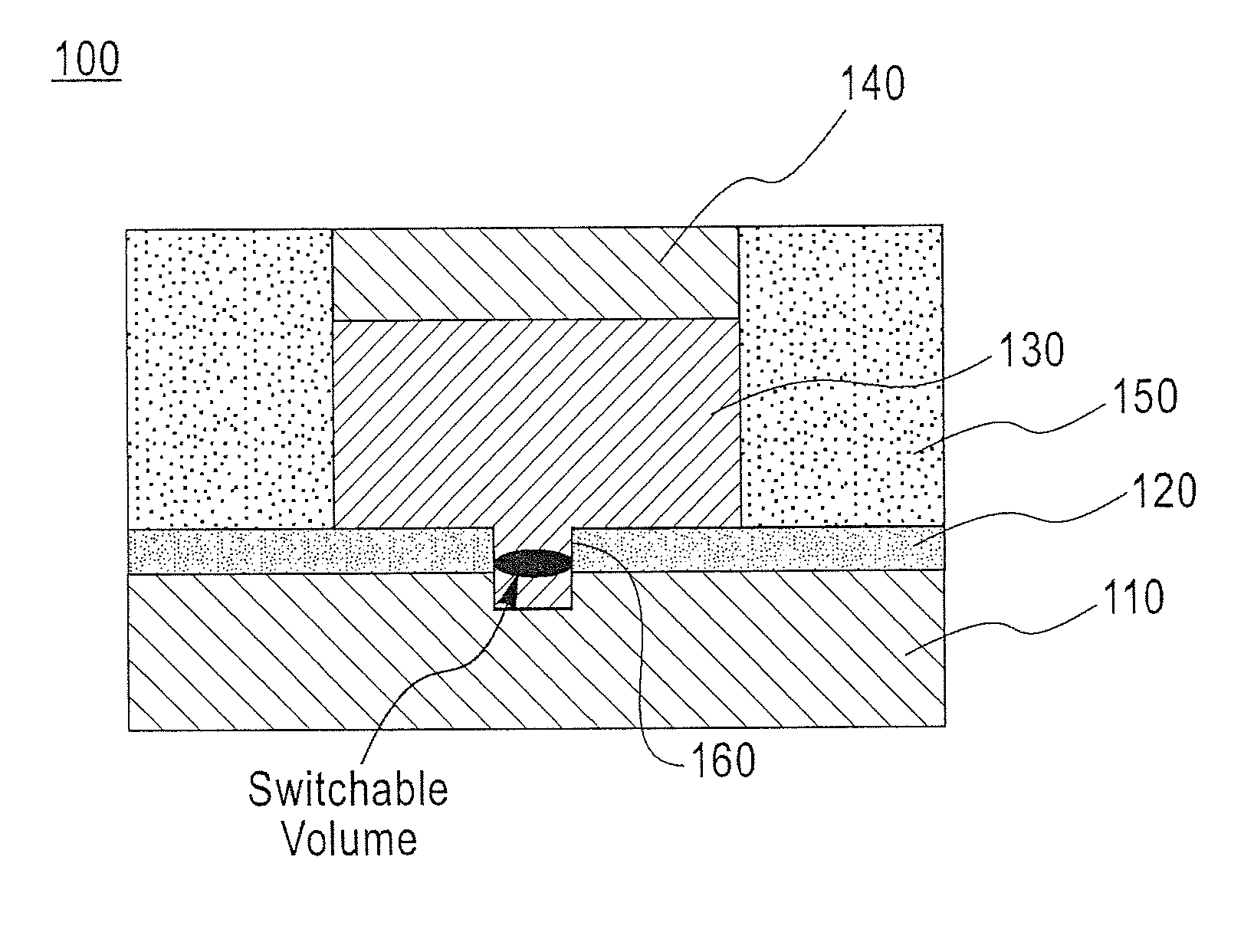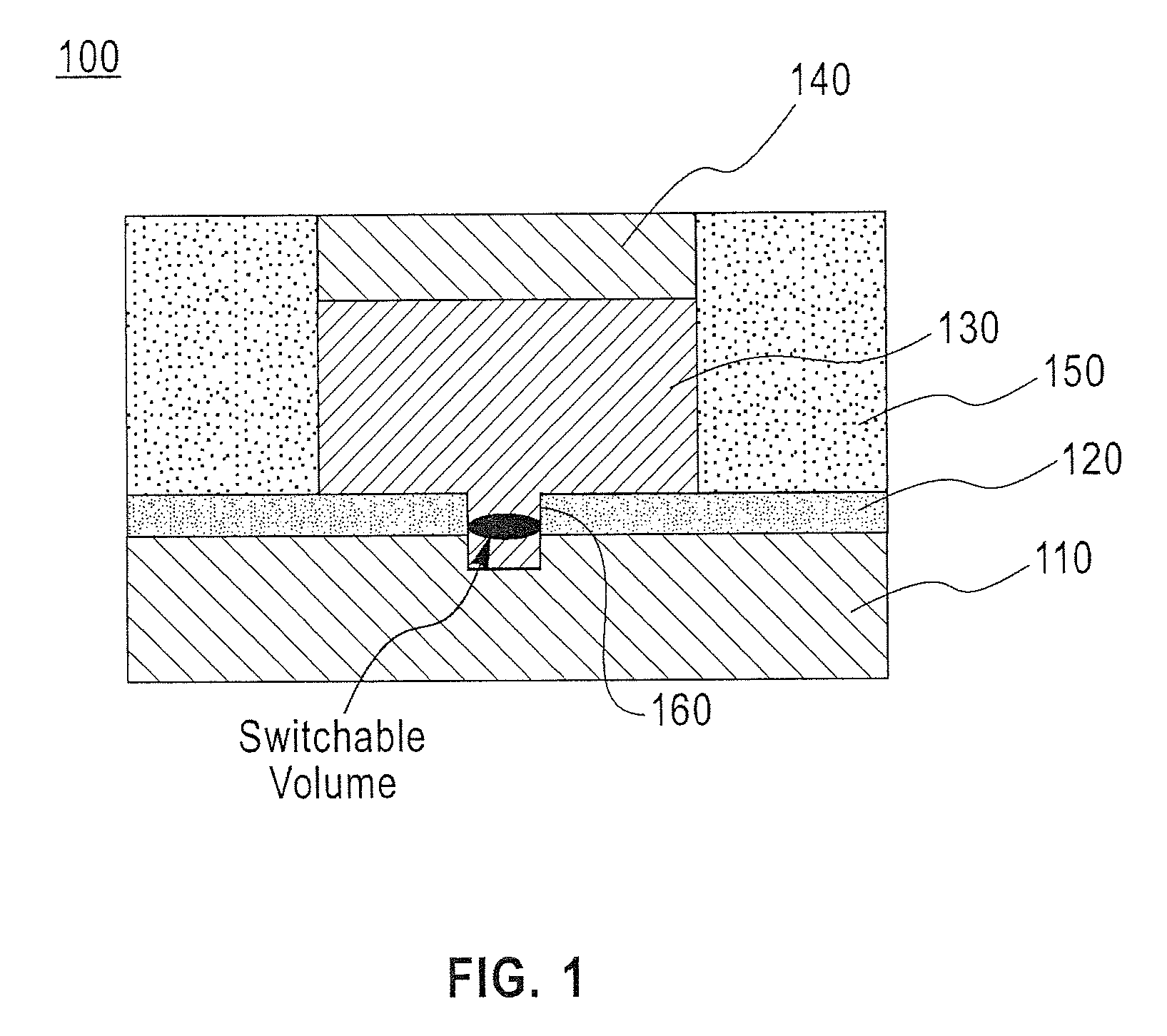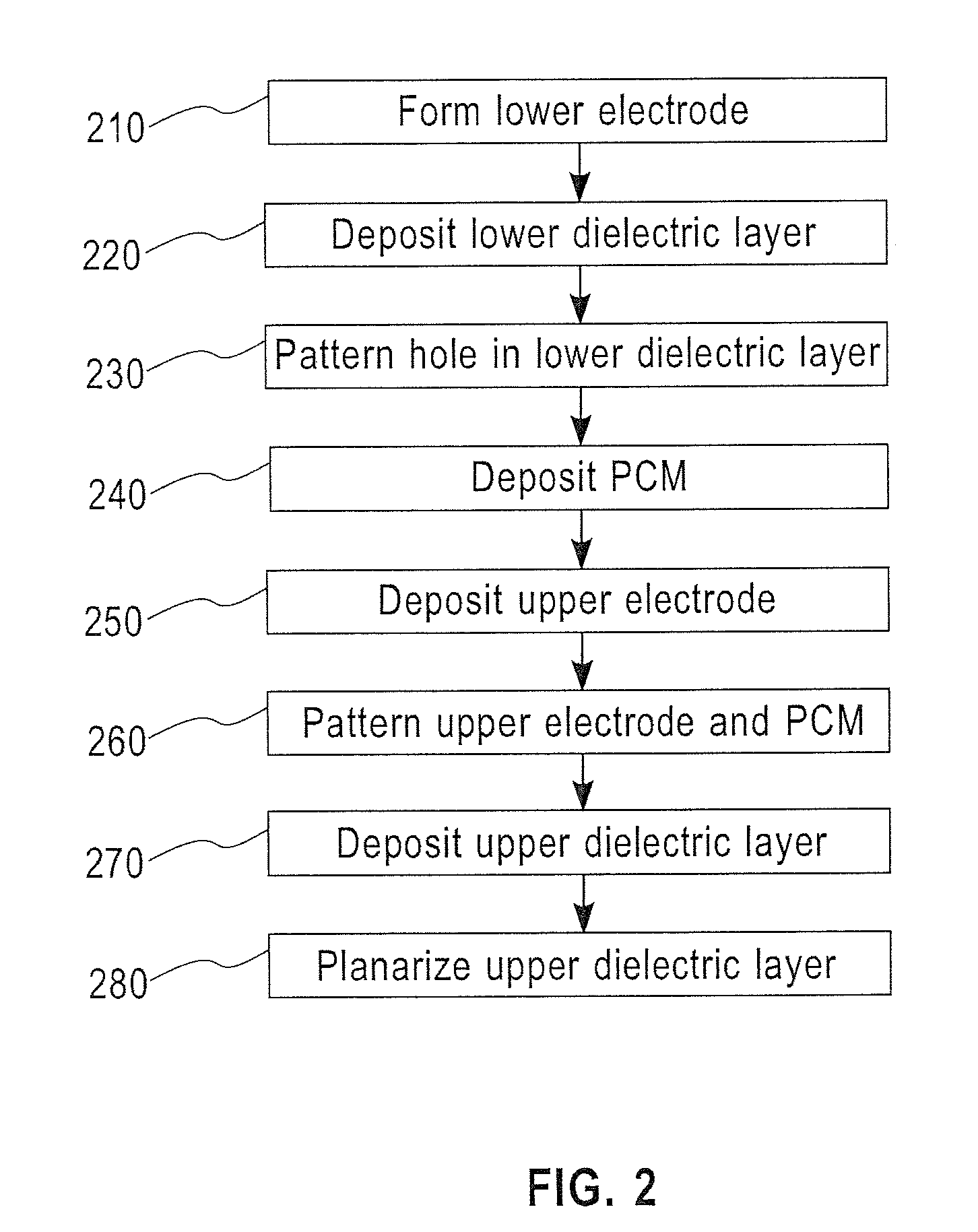Phase change memory cell with reduced switchable volume
a memory cell and phase change technology, applied in the field of memory cells in integrated circuits, can solve the problems of high localized ohmic heating, and high localized current density, and achieve the effect of reducing the required magnitude of the switching current pulse and high localized switching current density
- Summary
- Abstract
- Description
- Claims
- Application Information
AI Technical Summary
Benefits of technology
Problems solved by technology
Method used
Image
Examples
Embodiment Construction
[0014]This invention will be illustrated herein in conjunction with exemplary memory cells for use in integrated circuits and methods for forming such memory cells. It should be understood, however, that the invention is not limited to the particular materials, features, and processing steps shown and described herein. Modifications to the illustrative embodiments will become apparent to those skilled in the art.
[0015]Particularly with respect to processing steps, it is emphasized that the descriptions provided herein are not intended to encompass all of the processing steps which may be required to successfully form a functional integrated circuit device. Rather, certain processing steps which are conventionally used in forming integrated circuit devices, such as, for example, wet cleaning and annealing steps, are purposefully not described for economy of description. However one skilled in the art will readily recognize those processing steps omitted from these generalized descrip...
PUM
 Login to View More
Login to View More Abstract
Description
Claims
Application Information
 Login to View More
Login to View More - R&D
- Intellectual Property
- Life Sciences
- Materials
- Tech Scout
- Unparalleled Data Quality
- Higher Quality Content
- 60% Fewer Hallucinations
Browse by: Latest US Patents, China's latest patents, Technical Efficacy Thesaurus, Application Domain, Technology Topic, Popular Technical Reports.
© 2025 PatSnap. All rights reserved.Legal|Privacy policy|Modern Slavery Act Transparency Statement|Sitemap|About US| Contact US: help@patsnap.com



